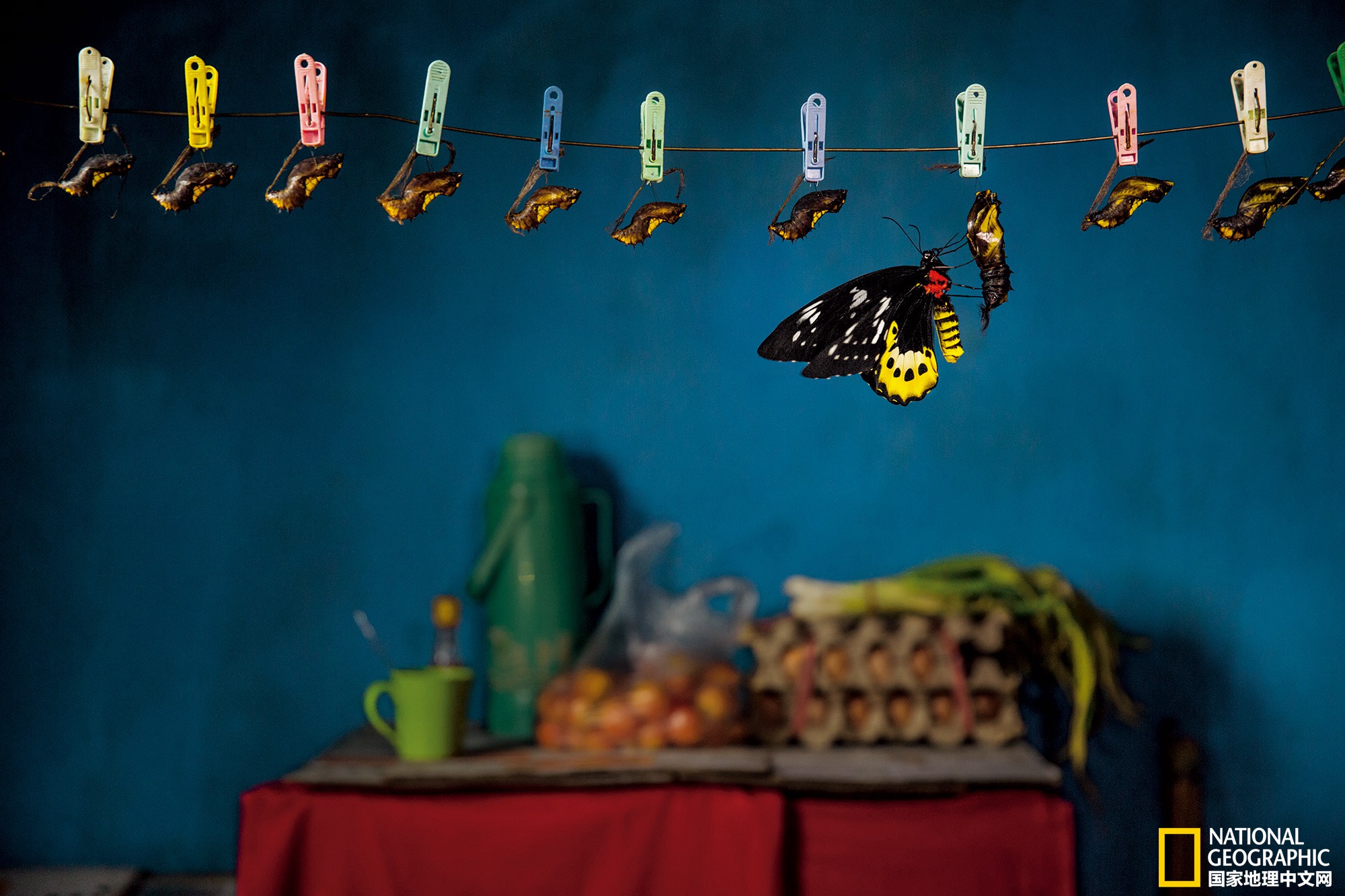In the dark world of catching and trading such exquisite insects, the colorful loot is fascinating. Pictured: A Goliath bird-winged butterfly hatches in the kitchen of a hotel in West Papua, Indonesia. Hatched butterflies are killed early to preserve their wings. The trade in rare butterflies — both legal and illegal — is spread around the world, from catchers to middlemen to collectors. Photograph: Evgenia Abugayeva

A catcher on the Indonesian island of Bachan sorts out specimens to be sold in Bali. From there, the butterflies will be exported across Asia and then to collectors around the world. Photograph: Evgenia Abugayeva
A young mother on the Indonesian island of Sulawesi sorts out her harvest. It is the closest to the source of the catch, and the butterfly trade is a means of livelihood. Families often tend to farm in one season and catch butterflies in the other. Each specimen may cost them a penny or two. Photograph: Evgenia Abugayeva
From December to March, Bako Baggis trekked thousands of kilometres along his own migration route, tracking butterflies into the remote Indonesian jungle. He caught mysterious bird-winged butterflies, sometimes finding only one or two in a week, merchants might buy them for more than a hundred dollars a piece, and foreign collectors spent much more. Photograph: Evgenia Abugayeva
Bright out of lightness: the pupae of the bird-winged butterfly – the final stage of metamorphosis into a butterfly, feathering into a winged adult – is a variety of tones to simulate the vegetation around the pupae. These are native species of Cambodia. ROBERT CLARK
White cloth and bright lights act as traps to attract moths at the request of a Japanese collector. He employs villagers to raise butterflies and act as guides, providing jobs that allow butterflies to make an important contribution to the local economy, but can also jeopardize conservation efforts. Photograph: Evgenia Abugayeva
A statue of the proud local blue-clad butterfly towers over the entrance to bandi Mulen Ecotourism Park. The national park was established in 2004 to help butterflies cope with some of their woes, such as habitat loss and pesticide use, but also face the threat of butterfly poachers. Photograph: Evgenia Abugayeva
The exquisite natural displays attract collectors to the Parisian herbarium "Dai Basil", which was founded in 1831. The store was built around the time of the rise of butterfly collections in Europe, and lepidopterans began searching for specimens around the world. Today, butterfly collecting is particularly popular in Japan. Photograph: Evgenia Abugayeva
At the annual Tokyo Insect Collection, collectors and traders buy and sell butterfly specimens from Africa, Asia, the Americas and elsewhere in the globe. The bazaar has no website, but it still attracts enthusiasts from all over the world. The international market for butterflies, like the elves themselves, is quiet and elusive. Estimates of the volume of bazaar trade are in the hundreds of millions of dollars per year. Photograph: Evgenia Abugayeva